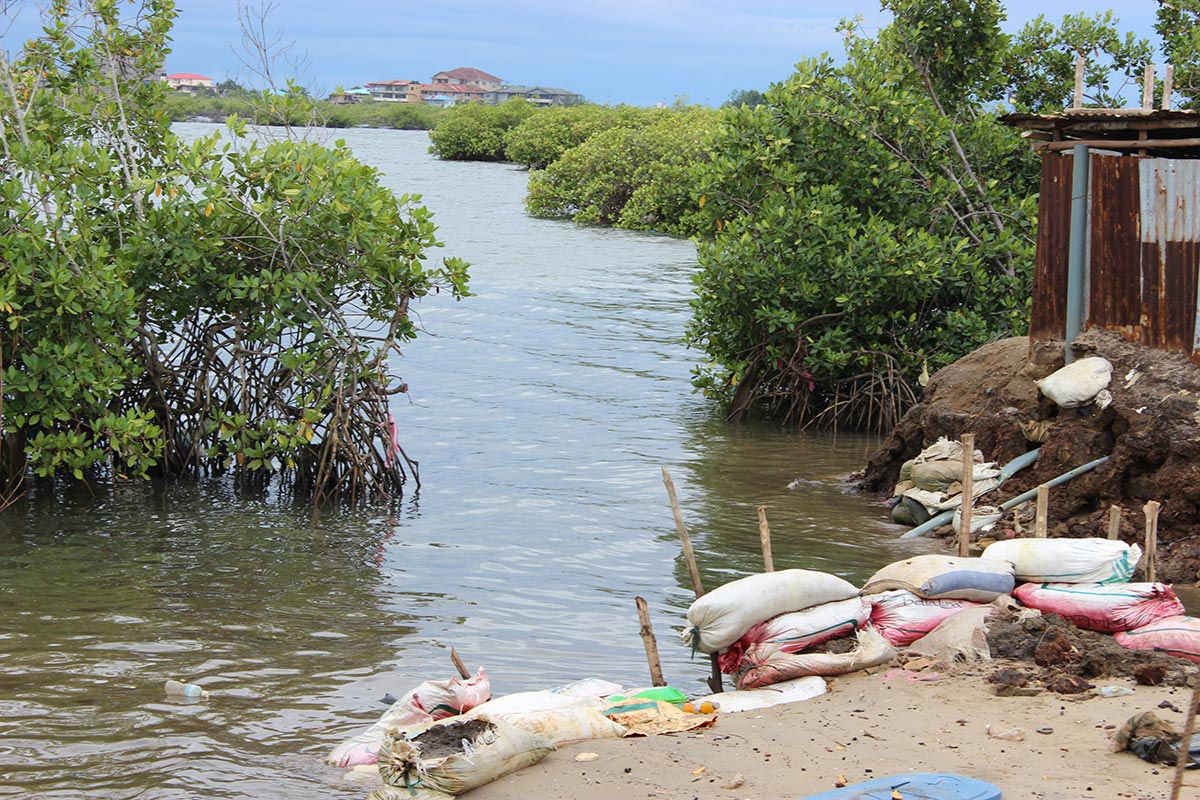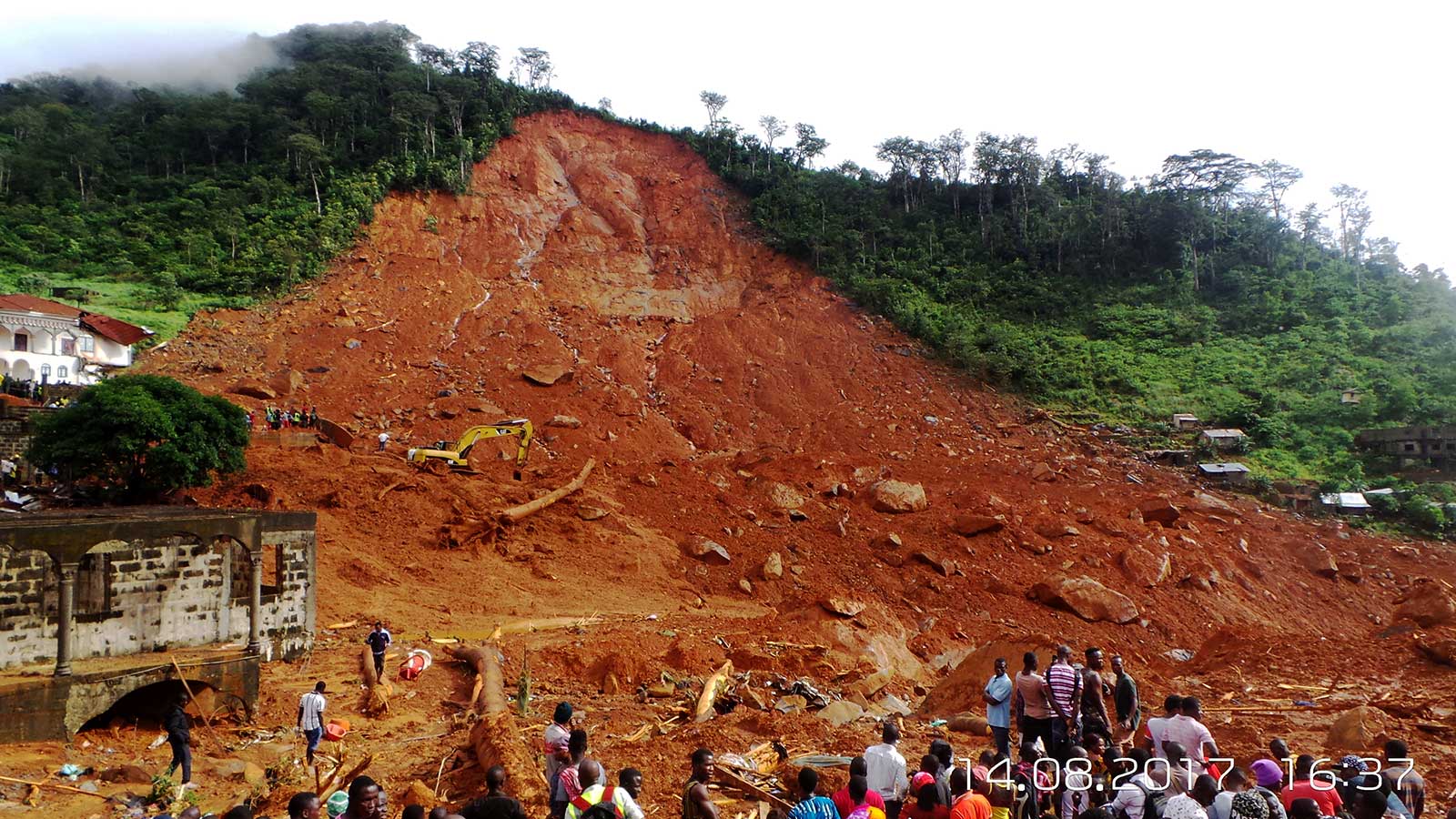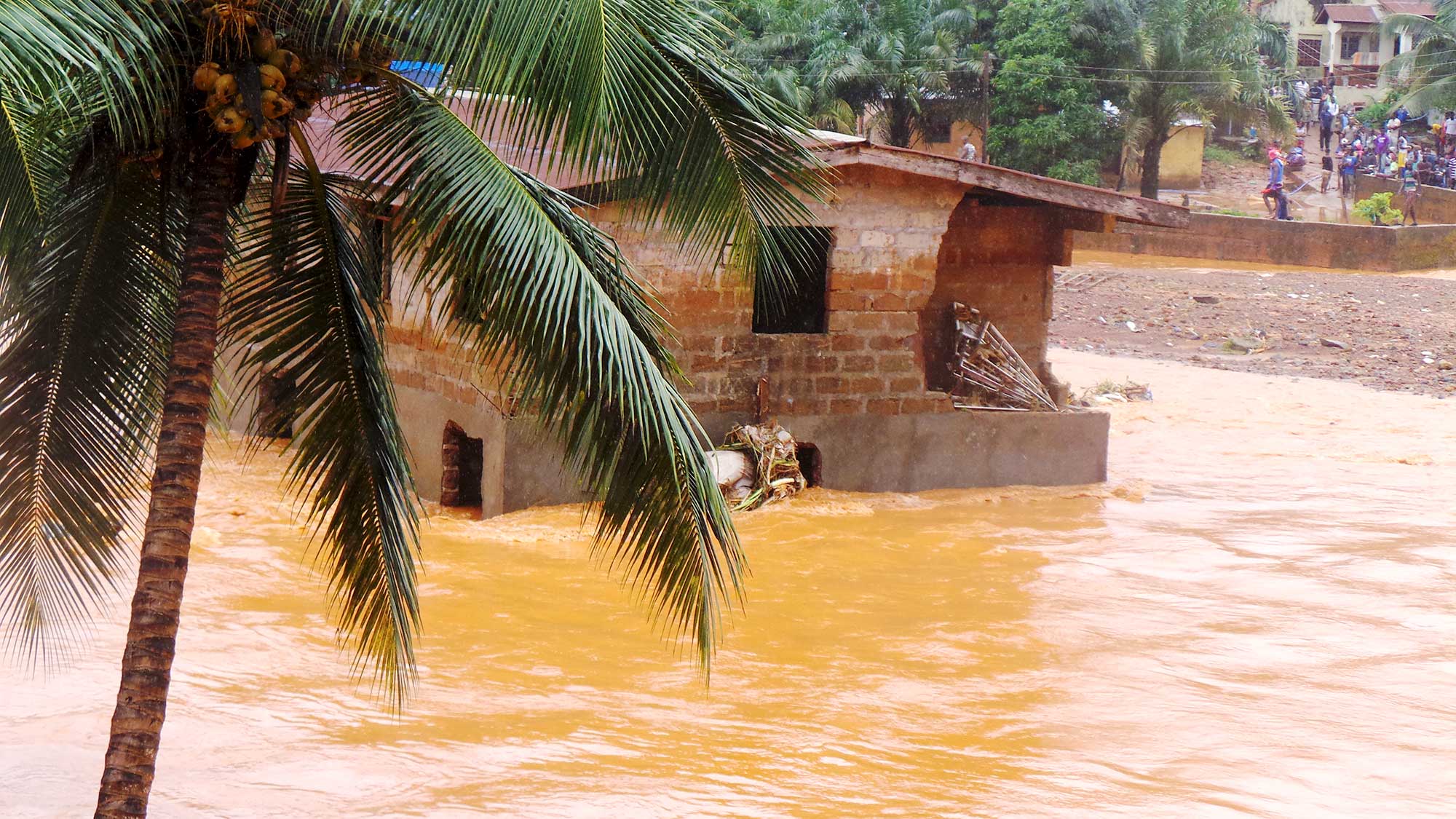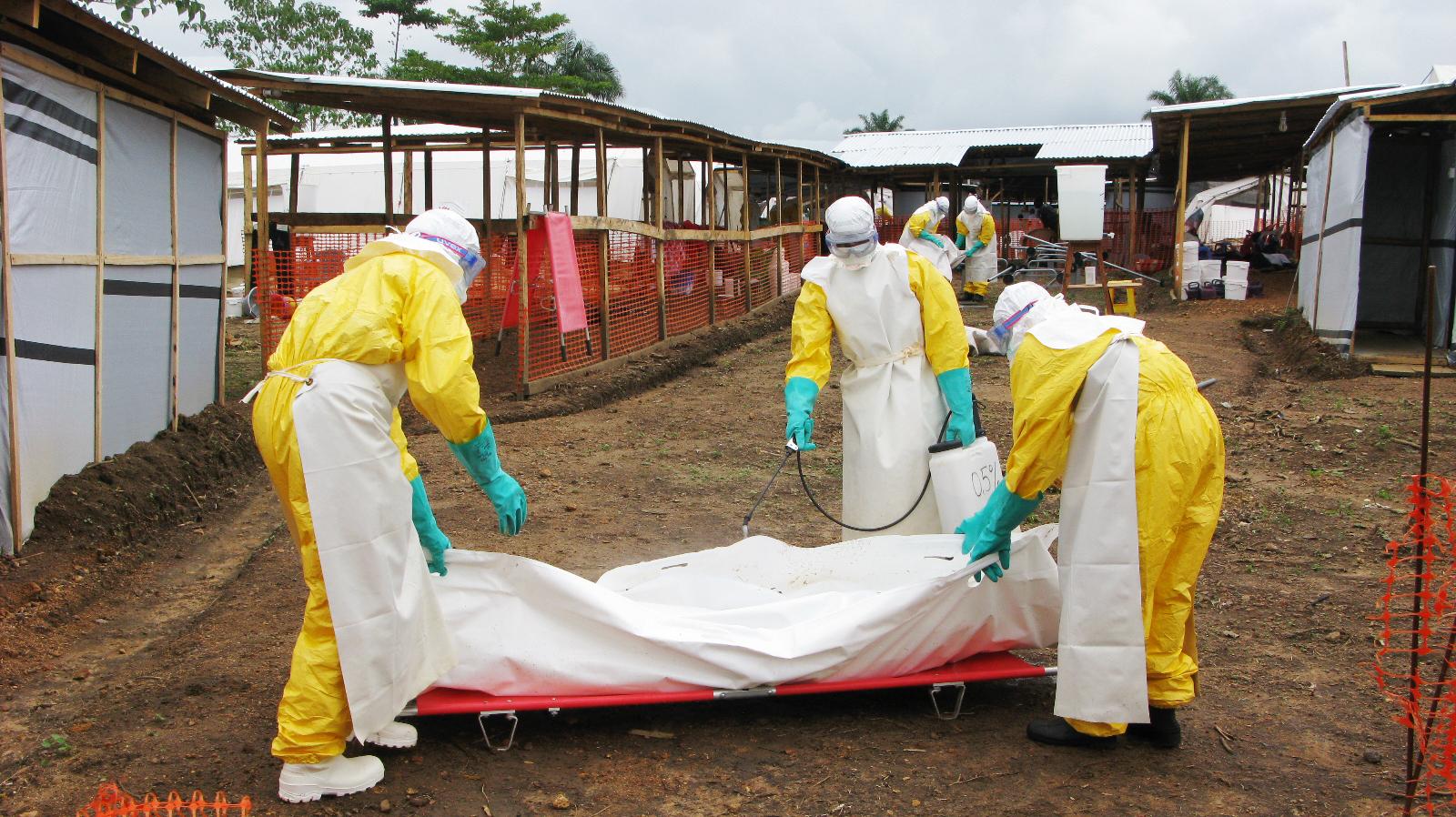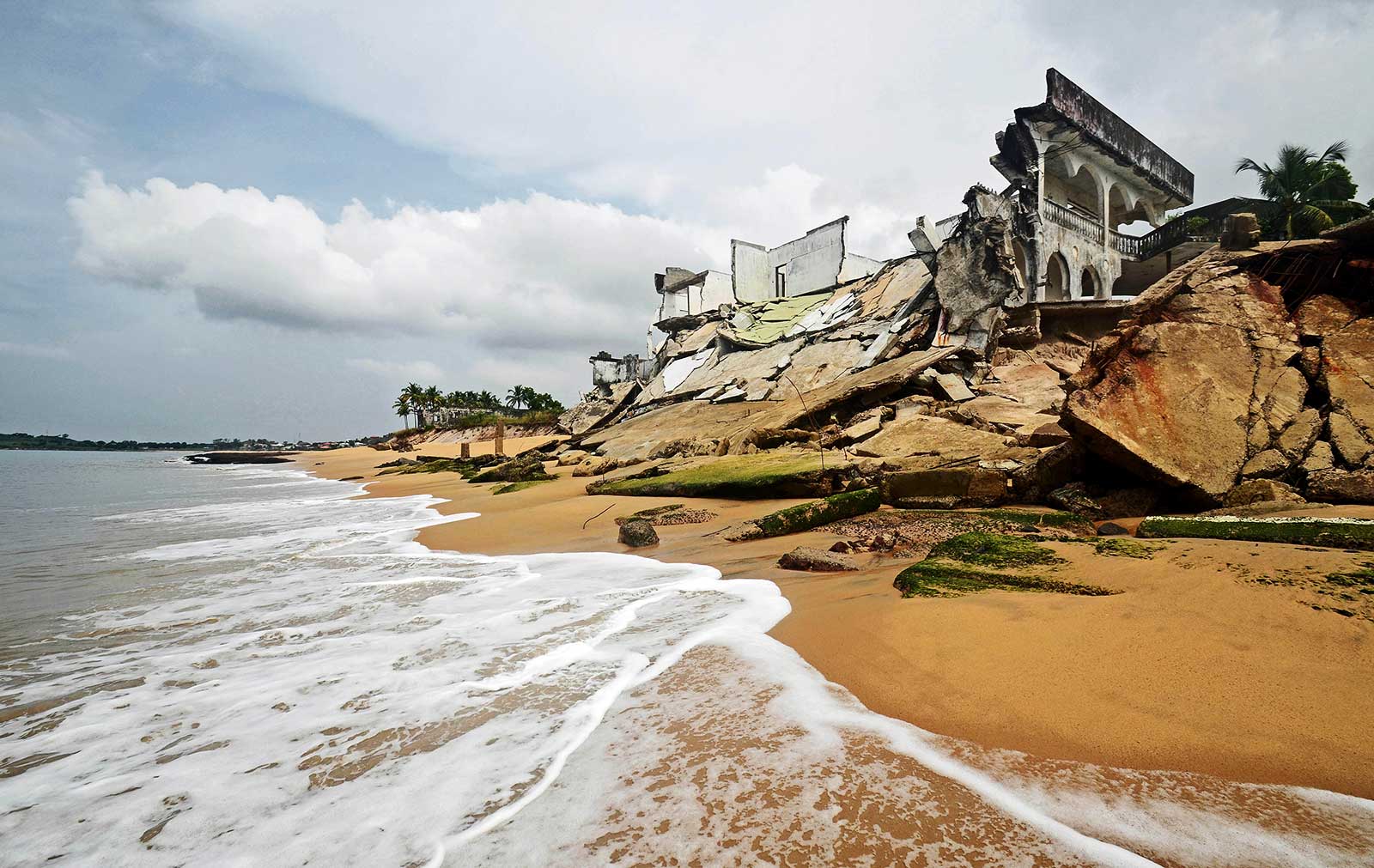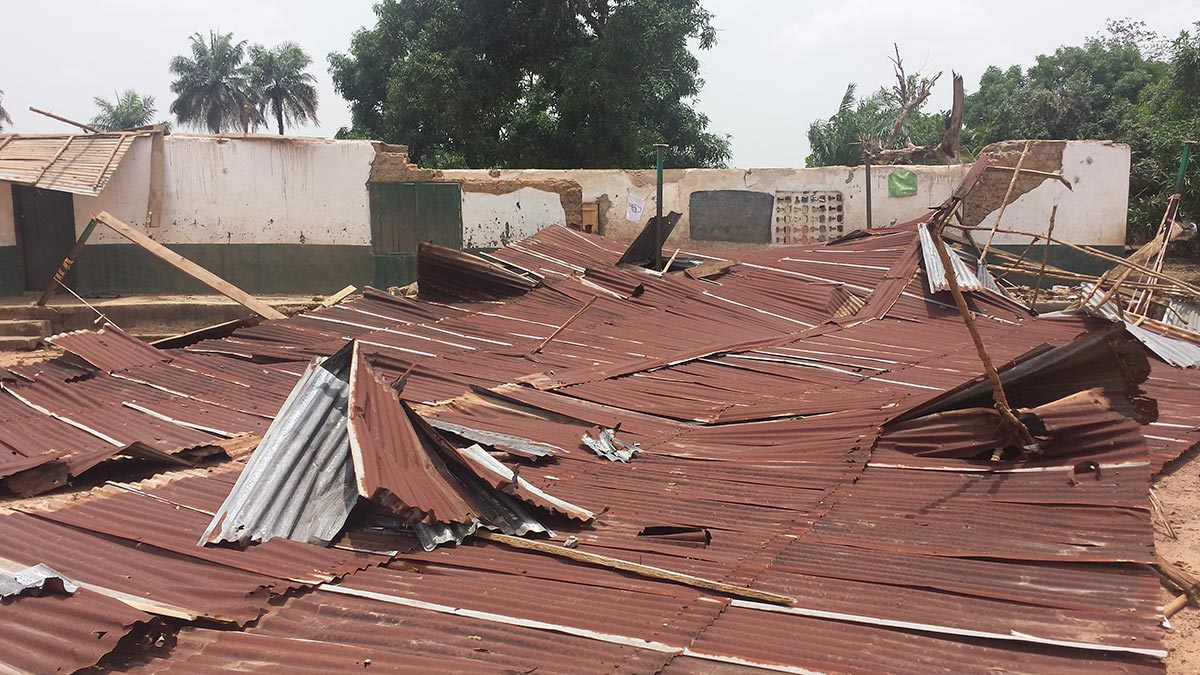Deforestation and land degradation is caused by multiple forces, including extreme weather conditions particularly drought, and human activities that pollute or degrade the quality of soils and land utility negatively affecting food production, livelihoods, and the production and provision of other ecosystem goods and services. About 38% of Sierra Leone’s remaining land covered by forest is decreasing, principally as a result of anthropogenic activities which can all be attributed to poverty as the underlying cause of much of the forest degradation and deforestation. The main drivers of deforestation in Sierra Leone are: urbanisation, mining and quarrying, agriculture slash and burn farming, fire wood and charcoal production and timber production.
Although degradation processes do occur without interference by man, these are broadly at a rate which is in balance with the rate of natural rehabilitation. The most frequently recognised main causes of land degradation include: deforestation, over-cultivation of cropland, overgrazing of rangeland, waterlogging and salinization of irrigated land, and pollution and industrial causes. Within these broad categories a wide variety of individual causes are incorporated. These causes may include the conversion of unsuitable, low potential land to agriculture, the failure to undertake soil conserving measures in areas at risk of degradation and the removal of all crop residues resulting in 'soil mining' (i.e. extraction of nutrients at a rate greater than resupply). They are surrounded by social and economic conditions that encourage land users to overgraze, over-cultivate, deforest or pollute.
Summary of Established Reserves by Ecosystem
|
Ecosystem Type |
Number of Reserves |
Total Land Area, ha |
Categories Represented |
|
Montane |
2 |
43,720 |
National Park, Game Reserve |
|
Rainforest |
27 |
124,789 |
Forest Reserve, National Park, Game Reserve, Game Sanctuary |
|
Savanna |
3 |
113,500 |
National Park, Game Reserve, Game Sanctuary |
|
Wetland |
13 |
350,677 |
Strict Nature Reserve, Game Sanctuary, Game reserve, National Park, Important Bird Area |
|
Marine |
1 |
300,000 |
Inshore Exclusion Zone (IEZ) |
Designated Reserves and Corresponding Areas in Sierra Leone
|
Reserve |
Area (Ha) |
Reserve |
Area (Ha) |
|
Gola |
77,044 |
Nimini |
15,557 |
|
Tonkoli |
47,656 |
Freetown Peninsula (Western Area Peninsula Forest) |
14,089 |
|
Loma |
33,200 |
Sanka Biriwa |
11,885 |
|
Kambui |
21,213 |
Kangari Hills |
8,573 |
|
Dodo Hills |
21,185 |
Kuru Hills |
7,001 |
|
Tama |
17,094 |
Kasewe |
2,333 |
|
Provinces |
Area, hectares |
||||||
|
>10% |
>15% |
>20% |
>25% |
>30% |
>50% |
>75% |
|
|
Eastern province |
1,566,122 |
1,558,959 |
1,510,658 |
1,500,753 |
1,457,222 |
1,280,872 |
166,812 |
|
Northern province |
3,552,151 |
3,484,591 |
2,866,737 |
2,781,735 |
2,434,927 |
1,014,674 |
41,492 |
|
Southern province |
1,956,457 |
1,919,306 |
1,757,924 |
1,742,137 |
1,680,631 |
1,267,176 |
30,856 |
|
Western area |
62,996 |
59,499 |
49,923 |
48,877 |
45,098 |
26,565 |
3,421 |
|
National |
7,137,726 |
7,022,355 |
6,185,242 |
6,073,503 |
5,617,878 |
3,589,287 |
242,582 |

